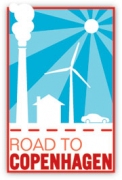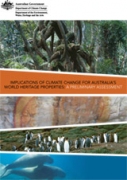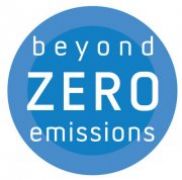
Logan and Albert Conservation Association

 To avoid catastrophic environmental change humanity must stay within defined 'planetary boundaries' for a range of essential Earth-system processes, argue Johan Rockström and his co-authors in a Nature Feature. If one boundary is transgressed, then safe levels for other processes could also be under serious risk, they caution. Seven expert commentaries respond to this proposal in Nature Reports Climate Change. Join the debate and listen to the podcast.
To avoid catastrophic environmental change humanity must stay within defined 'planetary boundaries' for a range of essential Earth-system processes, argue Johan Rockström and his co-authors in a Nature Feature. If one boundary is transgressed, then safe levels for other processes could also be under serious risk, they caution. Seven expert commentaries respond to this proposal in Nature Reports Climate Change. Join the debate and listen to the podcast.
Society is coming to realise that the provisions of earth are finite and we are consuming at rates beyond what can be sustained, and we do not know with any precision how close we are to our limits or what happens if we cross them.
In the latest issue of Nature is a groundbreaking new paper called "Planetary Boundaries: A Safe Operating Space for Humanity." In it, a team of 28 scientists has identified 10 separate biophysical systems crucial to humanity's flourishing; for each system they have identified a "safe operating boundary" within which humanity must remain if it wishes to maintain the basic environmental conditions in which it evolved.
The feature article can be read here. Seven expert commentaries respond to this proposal in Nature Reports Climate Change. Join the debate and listen to the podcast also from that link.
The scientists have identified the Earth-system processes and associated thresholds which, they believe, if crossed, could generate unacceptable environmental change. They have found nine such processes for which they believe it is necessary to define planetary boundaries: climate change; rate of biodiversity loss (terrestrial and marine); interference with the nitrogen and phosphorus cycles; stratospheric ozone depletion; ocean acidification; global freshwater use; change in land use; chemical pollution; and atmospheric aerosol loading.
The report Implications of climate change for Australia's World Heritage properties: a preliminary assessment is available from the government website  Department of Climate Change and the Department of the Environment, Water, Heritage and the Arts, from June 2009.
Department of Climate Change and the Department of the Environment, Water, Heritage and the Arts, from June 2009.
In the government's own words
World Heritage properties are important to all people and have a universal value that transcends national boundaries. Australia's 17 World Heritage properties include the world's largest, the Great Barrier Reef, extensive natural and Indigenous places like Kakadu National Park, isolated marine and terrestrial areas such as Macquarie Island, and Sydney Opera House, an architectural masterpiece.
Accordingly we should be able to expect that federal state and local governments will act to protect these significant properties.
You can download and read the report here
Other adapting to climate change publications available here http://www.climatechange.gov.au/impacts/publications/index.html
Climate Change Adaptation Actions for Local Government was released in June. You can read and download that document from this site. http://www.climatechange.gov.au/impacts/localgovernment/pubs/localadaption_localgovernment.pdf
It could be useful to review some of these publications prior to commenting on Draft South East Queensland Climate Change Management Plan. Publications and information is available from http://www.dip.qld.gov.au/climatechange.
As the American nation's leading conservation group creating urban parks and livable cities, The Trust for Public Land commissioned a report that addresses climate change and urban parks. Urban green space serves diverse purposes, ranging from neighborhood and city parks to river parkways, bike paths, and street trees, which in turn can produce different types of greenhouse gas benefits.
This white paper, prepared by ICF International, outlines the greenhouse gas benefits of adding green space to an urban area and introduces methodologies for estimating potential greenhouse gas reductions. The Trust for Public Land hope this paper will generate discussion about the need to create green livable cities, prompt new research on the benefits of parks to cities, and help government leaders in planning livable cities that reduce greenhouse gas emissions. 43 pages. Download the white paper [2.3 MB] from this page
 'Towards a Global Green Recovery', produced on behalf of the German Foreign Office, was written by Ottmar Edenhofer, co-chair of the Intergovernmental Panel on Climate Change, and Nicholas Stern, chair of the Grantham Research Institute on Climate Change and the Environment at the London School of Economics and Political Science, UK. Stern's message for G20 summit is clearly that stimulus packages must focus more resources on clean energy and averting climate change. Nature.com news reports here and has link to report document.
'Towards a Global Green Recovery', produced on behalf of the German Foreign Office, was written by Ottmar Edenhofer, co-chair of the Intergovernmental Panel on Climate Change, and Nicholas Stern, chair of the Grantham Research Institute on Climate Change and the Environment at the London School of Economics and Political Science, UK. Stern's message for G20 summit is clearly that stimulus packages must focus more resources on clean energy and averting climate change. Nature.com news reports here and has link to report document.
Disgruntled elves took time from their Christmas duties to leave a special message for Kevin Rudd at his Morningside office.
The elves are angry about K Rudd's 5% care factor and 95% coal factor in dealing with Australia's climate change challenges.
A spokesperson for the elves said "the north pole is melting and we want K Rudd to know we're not happy. We want K Rudd to care more about Australia and the north pole than coal."
The last thing K Rudd needs in these economic times is a bunch of homeless, unemployed and wet elves seeking refugee status due to climate change.
 Matthew Wright director of Beyond Zero Emissions and 2010 Young Environmentalist of the Year is LEAF keynote speaker 5 June 2011. Beyond Zero Emissions a volunteer-based climate change and energy research organisation. It is now producing a second iteration of its Zero Carbon Australia Stationary Energy plan.
Matthew Wright director of Beyond Zero Emissions and 2010 Young Environmentalist of the Year is LEAF keynote speaker 5 June 2011. Beyond Zero Emissions a volunteer-based climate change and energy research organisation. It is now producing a second iteration of its Zero Carbon Australia Stationary Energy plan.
Click on image to view website. Australia does not need to be a fossil fool. Alternatives are possible without losing our quality of life.
Australia has announced it is set to get solar powered pollies as the Department of Parliamentary Services announced it would install photovoltaic panels atop Parliament House in Canberra. According to the Australian solar PV maker SilexSolar, work has already begun and the project is due to be completed mid-2011.
Matthew Wright is Founder and Executive Director Beyond Zero Emissions (BZE)
Matthew Wright epitomises personal sacrifice, determination, commitment and passion. In 2006, he set up Beyond Zero Emission in response to the inaction of leaders and decision makers in addressing issues related to climate change. His vision behind Beyond Zero Emission is to help bring about the changes needed to reach a safe climate for current and future generations.
This vision complemented by his inexhaustible passion has generating high level support from a diverse range of sectors. Environment Minister's Young Environmentalist of the Year Award is presented to the entry that has been deemed via the judging process to be an outstanding environmental achievement at a national or international level by an Australian individual between 18 and 30 years of age.
Be inspired - come along to LEAF listen to and meet Matthew Wright director of Beyond Zero Emissions and 2010 Young Environmentalist of the Year